Talking about the IBPS Clerk preliminary examination, the level of exam was from easy to moderate and any candidate who have practiced well enough can attempt good number of questions without any hurdle. And as per the reviews we have received from our readers, most of them have attempted above 70 questions. So we can expect the cutoff going high and touching the sky this year also as the same happened in last year. Now let us look towards some memory based reasoning ability questions and the right way to approach them inorder to get the answer in the least possible time.
Seating Arrangement Puzzles
Directions : Read the information given carefully and arrange them as per the instructions written below.
Seven people are sitting adjacently in a row. Some people are facing north and some people are facing south.
A is sitting second to the right of B. B is sitting either second from the left end or second from the right end. There are two people sitting between A and E. A faces the north direction. E is sitting to the right of A. The immediate neighbours of A face the opposite direction. C is sitting to the immediate left of B. G sits second to the right of A. The immediate neighbours of G are facing opposite directions. F is sitting third to the right of G and faces towards south. C faces the direction opposite to that of D.
Solution : As we all know that solving seating arrangement questions is all about picking the right statements and using them to arrange the given data correctly. In this problem first let us consider the statement saying “B is sitting either second from the left end or second from the right end” and then “A is sitting second to the right of B” Soon after this arrangement you will come to know that two cases have been formed as shown in the figure below. Next going with the statements which says that “There are two people sitting between A and E. A faces the north direction” and “E is sitting to the right of A”
 |
| case (i) |
 |
| case (ii) |
Now after the given instructions, we are required to eliminate one of the case inorder to arrive at the final arrangement, so we need to pick that statement which can help us in doing so. Considering the statement “C is sitting to the immediate left of B” which means that C need to take a place which is to the immediate left of B and it can only be done in case (i) as we can see in case (ii) E is sitting to the immediate left of B and thus C cannot be placed as per the given instructions. Hence we can eliminate case (ii) easily and move on by arranging the data as per the instructions given.
Next considering the statement which says that “G sits second to the right of A.” and “F is sitting third to the right of G and faces towards south” Now after arranging these information we can come to conclusion that if F is facing towards south, then the other immediate neighbour of A must be facing towards north as said in the question that “The immediate neighbours of A face the opposite direction” and if the immediate neighbour of A which is also the immediate neighbour of G is facing towards north then the other immediate neighbour of G must be facing towards south, which is also given in the question as “The immediate neighbours of G are facing opposite directions” Now taking the last statement which says that “C faces the direction opposite to that of D” and here as we know that only vacant place left which is to the immediate right of A and facing towards north can only be the place of D. Therefore C will face towards south direction. At last the final arrangement of the given seating arrangement question will look like as shown in the figure below.
The time taken to solve this puzzle should not exceed beyond 2-3 minutes on average.
Directions : Read the information given carefully and arrange them as per the instructions written below.
Eight persons named as A, B, C, D, E, F, G and H are sitting around a square shaped table with four persons sitting at the corners and four persons are sitting at the middle of the sides. The person sitting at the corners faces inside whereas the persons sitting in the middle of the sides faces outside.
B faces the centre and C is sitting third to the right of B. Three persons are sitting between D and E. A sits second to the left of D. H is sitting to the immediate left of D. F is facing towards inside. Two persons are sitting between E and F.
Solution : As we all know that solving seating arrangement questions is all about picking the right statements and using them to arrange the given data correctly. In this puzzle let us first draw a square shaped table with its four persons which are sitting at the corners facing inside and the other four which are sitting in the middle of sides facing outside as per the instructions given above. Now starting with the statement which says that “B faces the centre and C is sitting third to the right of B“,so let’s take any place for B in the corner of the square table which is facing towards inside. Next the statement says that “Three persons are sitting between D and E” so to arrange this statement only two cases can be formed as shown in the figure below. Now picking the statement “A sits second to the left of D” and arrange it.
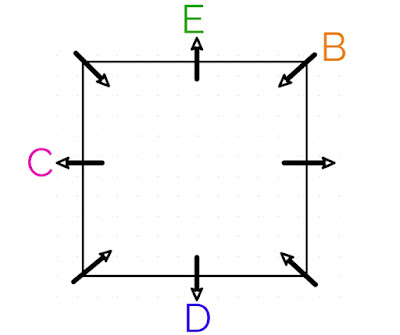 |
| case (i) |
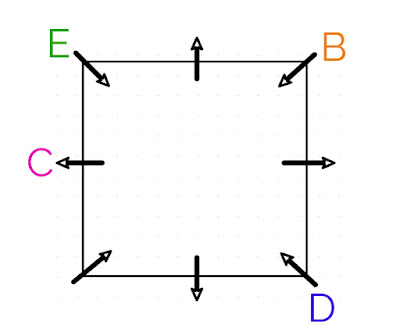 |
| case (ii) |
The statement “H is sitting to the immediate left of D. F is facing towards inside and Two persons are sitting between E and F” makes it clear that we can easily eliminate the case (ii). At last our final arrangement will look as shown in the figure below.
The time taken to solve this puzzle should not exceed more than 2 minutes.
Syllogism
Directions : In each question, statements are given followed by the two conclusions. Read all the conclusions and decide which of the given conclusion follows the given statement.
Q.1)
Statements:
Some train are buses.
Some buses are cars.
All cars are trucks.
Conclusions:
I. Atleast some trucks are trains
II. No truck is a train.
Solution : Making the Venn diagram of the given statements as shown in the figure below.
As we can clearly observe that conclusion (I) is false and is not matching with the given statements. Similarly conclusion (II) is also false and is not matching with the venn diagram as shown above.
But both the given conclusions are forming a complementary pair with each other and since both of them are false, therefore we can mark the answer as Either (I) or (II) conclusion follows.
Q.2)
Statements:
Some dogs are cats.
All cats are tiger.
No tiger is a Lion.
Conclusions:
I. Some dogs are definitely not Lions.
II. No dog is a Lion
Solution : The venn diagram for the given statements can be represented as shown below.
From the venn diagram it can be observed easily that conclusion (I) clearly follows the given statements as some dogs which are cats can not be Lions because cats are forming a subset in Tiger and it’s given that no tiger is a lion, therefore conclusion (I) will follow. On the other hand, conversely the conclusion (II) is not following because we cannot form any relationship between dog and lion and therefore it can’t be said that No dog is a Lion.
Hence, Only (I) conclusion follows.
That’s all in this article, if you find it useful then don’t forget to share it with others and if there’s any doubt, feedback or suggestions then feel free to share with us in the comment section given below.
Thank You !!



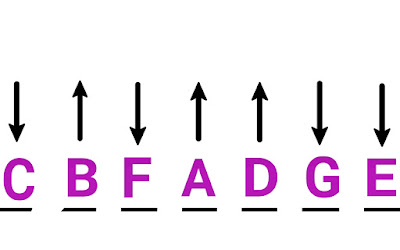
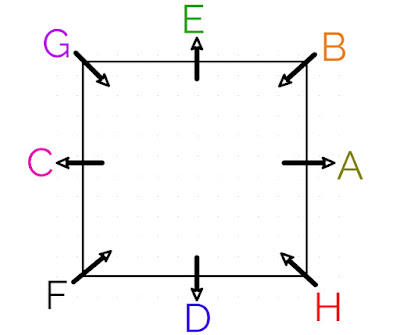
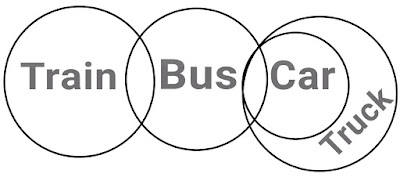
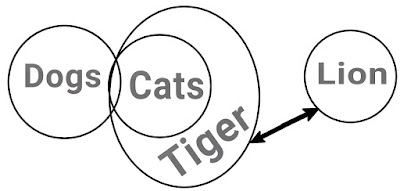
Leave a Comment